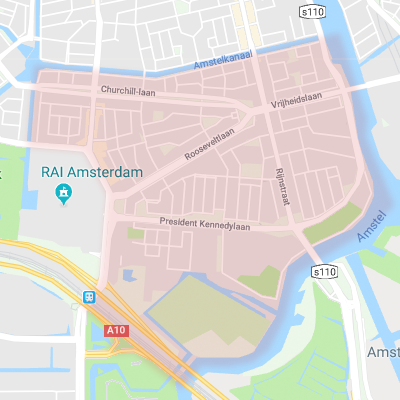The Rivierenbuurt is more expensive than De Pijp neighbourhood. It was built in the 1920s as a primarily middle-class residential area, part of the Plan Zuid (Plan South) urban expansion programme designed by famous Dutch architect Berlage. The area mainly consists of fully enclosed apartment blocks, many of which were designed in the style of the Amsterdam School, characterized by its curvy facades and wealth of fantasy ornaments.
De Wolkenkrabber
The most striking building in the Rivierenbuurt is 'De Wolkenkrabber' ('The Skyscraper') at Victorieplein square. The building, which is officially named Twaalf Verdiepingenhuis (Twelve Storey House), was built in 1930-1932 and designed by architect Staal. It was the city's first high residential tower (over 40m high).










